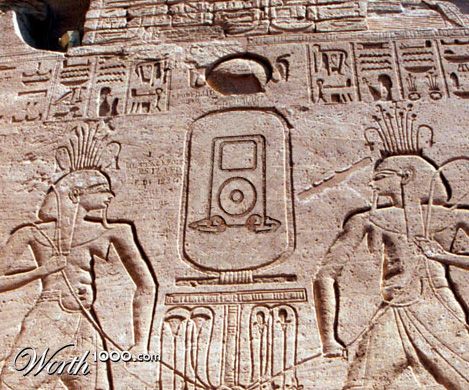Introduction
Ancient technology encompasses the tools, ways, and inventions developed by early societies that laid the root for ultramodern advancements. Despite being thousands of times old, numerous of these technologies were remarkably sophisticated and continue to intrigue chroniclers, archaeologists, and masterminds. This disquisition into ancient technology reveals the imagination of early societies and their benefactions to our contemporary world.
Early Engineering Marvels
The Great Pyramids of Giza
One of the most notorious exemplifications of ancient technology is the construction of the Great Conglomerations of Giza in Egypt. erected around 2580 – 2560 BCE, these monumental structures were created using a combination of professed labor, precise engineering, and innovative ways. The exact styles used to transport and assemble the massive gravestone blocks remain a subject of debate, but propositions suggest the use of ramps, regulators, and a well- organized pool. The perfection with which these conglomerations were constructed reflects a deep understanding of mathematics and engineering.
Roman Aqueducts and Infrastructure
The Roman Empire is famed for its advanced structure, particularly its courses, which were pivotal for supplying water to civic centers. Roman masterminds designed intricate systems of channels and bends that transported water from distant sources into metropolises and municipalities. The Pont du Gard in France is a high illustration of this technology, showcasing the Romans’ capability to blend functionality with aesthetic majesty. This structure not only handed essential coffers but also demonstrated the Romans’ moxie in hydraulics and construction.
Innovations in Metallurgy
The Iron Age and Tool Making
The transition from the Citation Age to the Iron Age marked a significant technological advancement. The wide use of iron for tools and munitions revolutionized husbandry, warfare, and diurnal life. Iron smelting ways, developed around 1200 BCE, allowed for the product of stronger and further durable tools compared to their citation forerunners. This shift eased the growth of societies by perfecting tilling effectiveness and enabling further effective construction styles.
Damascus Steel
Another notable invention in metallurgy is Damascus sword, used from around 300 – 500 CE. This sword, known for its distinctive patterns and exceptional strength, was produced through a unique forging process involving repeated heating, folding, and forging. The result was a blade with superior slice capability and adaptability, prized by soldiers and tradesmen likewise. The secrets of Damascus sword product were nearly guarded, and ultramodern metallurgists have only lately begun to understand and replicate these Ancient Technology ways.
Astronomical and Mathematical Achievements
The Antikythera Mechanism
The Antikythera medium, an Ancient Technology analog computer from around 100 BCE, was discovered in a shipwreck off the seacoast of Greece. This sophisticated device was used to prognosticate astronomical positions and declines with remarkable delicacy. Its intricate gears and dials represent a position of mechanical complication that was n’t allowed to live in the ancient world. The Antikythera medium highlights the advanced understanding of astronomy and engineering held by ancient Greek scientists.
Maya Calendars and Astronomical Observations
The Maya civilization, flourishing in Mesoamerica from around 250 CE to 900 CE, developed an advanced timetable system that was more accurate than those of numerous contemporary societies. The Maya timetable comported of several interlocking cycles, including the Tzolk’in( 260- day conventional timetable) and the Haab'( 365- day solar timetable). Their capability to track elysian events and prognosticate solar and lunar cycles reflects a profound knowledge of astronomy and mathematics, demonstrating their sophisticated experimental chops.
Medical and Scientific Advances
Ancient Egyptian Medicine
Ancient Egyptian medicine, rehearsed from around 3000 BCE, was both practical and advanced for its time. Egyptian healers used a combination of herbal remedies, surgical ways, and magical practices to treat a variety of affections. The Edwin Smith Papyrus, an Ancient Technology medical textbook, provides detailed descriptions of surgical procedures and judgments , revealing a structured approach to medical care. This early medical knowledge laid the foundation for posterior developments in medical wisdom.
Greek and Roman Contributions
In Ancient Technology Greece and Rome, drug continued to evolve with significant benefactions from numbers like Hippocrates and Galen. Hippocrates, frequently regarded as the” Father of Medicine,” emphasized the significance of observation and clinical practice, which came foundational principles in medical practice. Galen, a Roman croaker , expanded on Hippocratic ideas and introduced detailed anatomical studies and surgical ways that told medical practice for centuries.
Legacy and Influence
Preservation and Rediscovery
The Ancient Technology and inventions of ancient societies have had a continuing impact on ultramodern society. numerous of these ancient technologies were saved through literal textbooks, vestiges, and archaeological discoveries. The study and detection of these technologies offer precious perceptivity into the capabilities and achievements of early societies. ultramodern masterminds and scientists frequently look to ancient results for alleviation, conforming and enriching them to address contemporary challenges.
The Evolution of Technology
Ancient technology serves as a testament to mortal imagination and the nonstop elaboration of technological development. The advancements made by early societies paved the way for posterior inventions, impacting everything from construction styles and metallurgy to astronomy and drug. Understanding these Ancient Technology not only honors the achievements of our ancestors but also enriches our appreciation of the progress we’ve made.
Conclusion
Ancient technology, with its remarkable achievements and inventions, reveals the depth of mortal creativity and problem- working capacities. From the engineering sensations of the conglomerations to the sophisticated mechanisms of ancient Greece, these technologies reflect a profound understanding of the natural world and mortal eventuality. As we continue to explore and learn from the history, the heritage of ancient technology serves as a source of alleviation and a memorial of the enduring hunt for knowledge and advancement.


